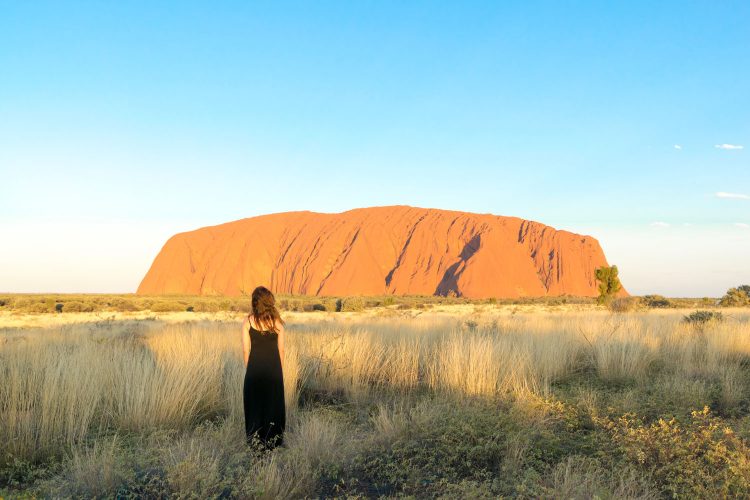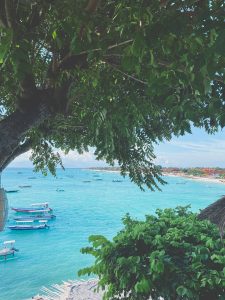Going on an Uluru hiking trip is a profound adventure. It’s something that those with the hardiest spirits want to do, not just for the physical challenge but for the spiritual connection such a journey brings.
These days, there are multiple tour companies offering Uluru hiking trips. However, you can attempt them solo or go with registered professionals who have permission to hike with you in the area.
Of course, if you are planning on attempting something like this, you need to go prepared. These adventures aren’t the sort of thing you want to do on a whim.
But what, exactly, should you take with you on an Uluru hiking trip?
That’s what you’re about to find out.
Lightweight And Breathable Clothing
First, you’ll want to start with lightweight and breathable clothing. The regions in the middle of Australia, around Uluru, are usually baking hot, but things can cool down significantly in the evenings, adding the need for layers.
Breathability is critical because of sweat. Hiking in the hot sun produces quite a lot of perspiration for most people.
Lightweight clothing also matters. Reducing pack weight as much as possible is essential for long trips like the ones to Uluru. Nobody wants to be lugging around more than they need.
Therefore, make sure you pick hiking clothes made from modern, sweat-wicking fibers. Look for options that are going to keep you comfortable for many miles while also allowing you to carry extra clothes at a low weight penalty.

Comfortable Hiking Shoes
You should also bring comfortable hiking shoes. You need shoes that are already “broken in” to avoid blisters and rubbing on the long road to the heart of the continent.
Make sure the shoes have a proper grip and can grab onto rocks. Look for options with tight tread patterns that allow you to scramble when needed. Don’t opt for cheaper shoes with plastic soles that are more likely to slip or chafe.
Usually, you won’t need waterproof shoes near Uluru because it is dry for most of the year. But you will need them to be breathable. Standard sneakers are unlikely to make the cut because they aren’t tough enough for the type of hiking you will be doing.

Fly Net
Another item you’ll want to bring with you is a fly net. These are essential for keeping insects at bay and reducing the risk of mosquito bites.
Fly nets are inexpensive and helpful in multiple situations, making them an excellent option for hikers wanting to make it all the way to Uluru without blotchy, bitten skin. They can also reduce the risk of getting a more serious infection by preventing bites in the first place, something that’s a real risk.
Fly nets are also useful for people who want to avoid constant swatting. Continuously attacking insects isn’t a pleasant experience for anyone involved.
Reusable Water Bottle
It’s also a good idea to take some sort of reusable water bottle with you on your hiking adventure. These often prove invaluable.
Sometimes, water is hard to come by in the Outback, and there can be many miles between stations. Fortunately, filter bottles allow you to fill up at streams and creeks if you come across any, giving you a constant supply.
Tour guides will usually insist that everyone brings a bottle like this with them on the adventure. They want to know that they have the means to survive if there’s an issue or they get cut off.
Reusable water bottles are handy but also need to be big enough to provide you with enough water for a day of walking in hot conditions. As such, you’ll need to bring at least three liters with you, and possibly more, plus filtration if required.
Uluru itself is also gigantic, so simple walks around the base can go on for many hours. As such, additional water is sometimes necessary.

Entertainment For Camping
Entertainment while camping is also critical for expeditions that last more than one day (as most do). Many people start from nearby settlements and then walk from there, often on an out-and-back route.
When you get to camp, playing cards and solitaire can help. You can also use your phone, if you have a signal, to play games online.
Sometimes, the tour guides themselves will arrange games for you. These can be tremendously fun, especially when they involve other people from the ground.
Trail Snacks
Related to this, you’ll also want to make sure that you bring plenty of trail snacks with you. Hiking all day can double or triple your usual calorie expenditure, meaning it’s critical to get enough food into your body as you walk. Otherwise, you run the risk of feeling faint.
The best trail snacks are all-natural. Dried fruit and nuts are the best options, but you can also bring energy bars with you if you think you need the extra food. Ideally, you should be eating more at breakfast and dinner, but that’s not always possible, given the constraints of the day.
Trail snacks are heavy, but bringing them is often worth it. You’ll need to ration them over the days you will walk, planning out how much you will eat.
Sunscreen
Of course, any trip to Uluru wouldn’t be complete without taking some trusty sunscreen with you. Given the proximity of Australia to the equator, the heat can be quite intense.
Buy the strongest sunscreen you can find, and look for options that combine mineral and chemical protectants. These formulations work slightly differently, so applying both is synergistic. You want to pay special attention to your face, making sure you slather it in sunscreen to stop it from burning. Re-applying every hour or so is often essential if you’re walking and sweating in the hot UV rays.
SPF 50+ is ideal for hikes to Uluru. It offers a near 100% occlusion of the sun’s rays, protecting the skin beneath. Combining it with a cap or additional protection can make it even more potent.
First Aid Kit
On your adventure, it’s also a good idea to bring a first-aid kit with you. The likelihood of an injury or medical problem is reasonably low, but it could still happen.
The most common issue is tick bites. These are most likely when walking through wet grass, so always protect your legs with thick material that can stop these critters from biting you.
You also want items for dealing with cuts, scrapes, and bruises. These are also likely in the outback, considering some of the challenges of physically getting to Uluru.
Finally, you’ll want some antiseptic plasters and bandages. These are useful if you have a more serious injury and can’t get medical help immediately.

Wide-Brim Hat
Whenever you see tourists adventuring on safaris or in the Outback, they always seem to wear wide-brimmed hats. But this isn’t just for fashion; it’s for ultimate sun protection. While sunscreen is effective, especially strong sun can penetrate it (or cause it to deplete in the case of chemical sunscreen).
Therefore, it’s advisable to wear a wide-brimmed hat. These provide ample protection from the sun and don’t add much overall weight, making them a no-brainer.
Try to find a wide-brimmed hat that will protect your face, eyes, and shoulders. Look for varieties that fit your look and make you feel confident.

Respect
Whenever you go to Uluru, you’ll also want to bring your sense of respect with you. The site is sacred for the Anangry people, so always follow the trails and the guidelines when near the site. Only approach it during your allotted booking.
Buff
It’s also useful to take a buff or neck gaiter with you when hiking outdoors in the sun all day. These act a bit like hats, preventing the sun from getting at the delicate skin around the neck.
Buffs also have the benefits of being exceedingly lightweight and versatile. They can fit into small pockets and side packs while also serving other functions, even becoming dish cloths if necessary.
Camera
Finally, you’ll want to bring a camera with you on your Uluru hiking and camping trip. Having a way to capture the memories is essential when doing something so profound.
Furthermore, Uluru just happens to be one of the most spectacular locations on the globe, making it ripe for artistic photography. Many people try to capture its beauty and timelessness during the morning or evening, but there are plenty of opportunities for photos throughout the day.
Many photographers try to give Uluru an otherworldly feel with post-processing and editing. However, the best pictures are those that tell a story but keep everything grounded as much as possible.

So, which of these items do you want to bring with you on a trip to Uluru?




